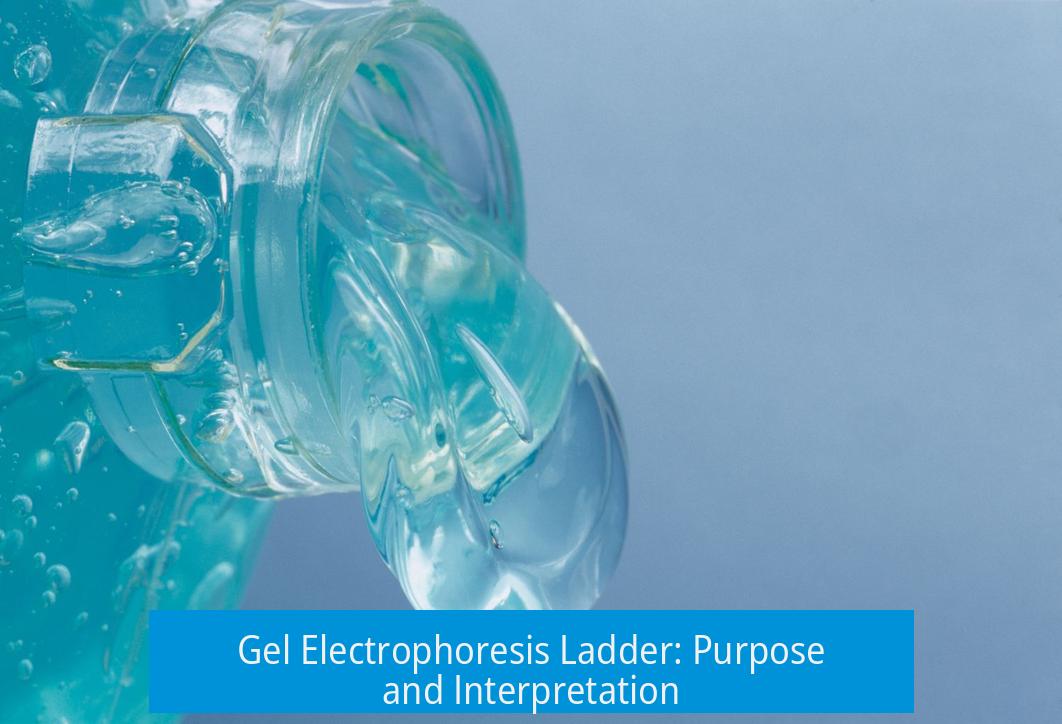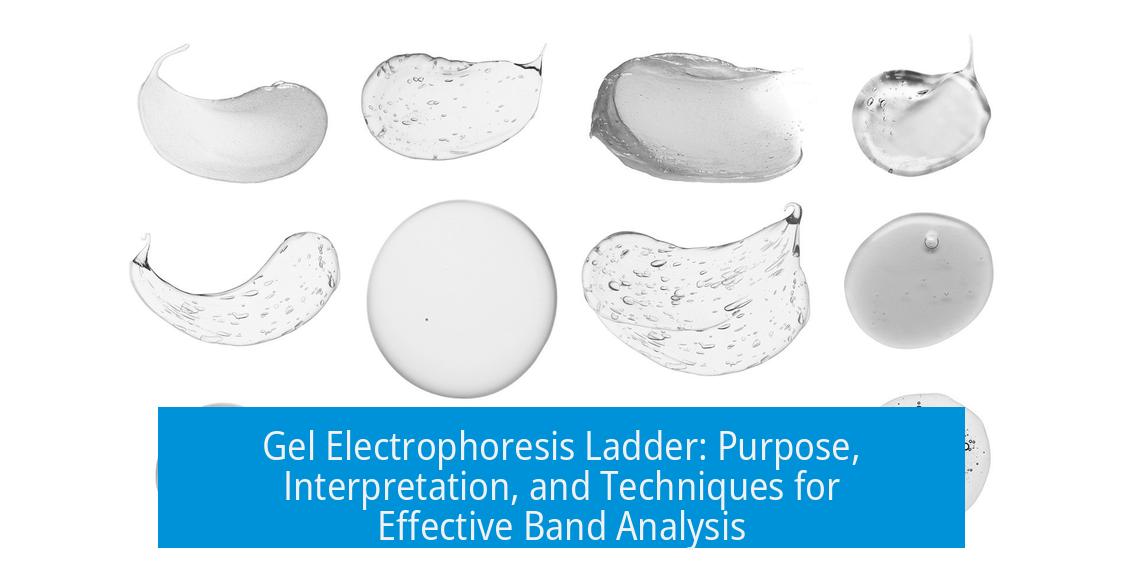Gel Electrophoresis Ladder: Purpose and Interpretation

A gel electrophoresis ladder serves as a molecular weight marker used to estimate the size of DNA, RNA, or protein fragments during electrophoresis. The ladder contains bands of known fragment sizes, allowing comparison to the sample bands for size determination. This marker is essential to judge the validity and scale of electrophoresis runs accurately.
Understanding Ladder Band Patterns
Ladders display specific bands representing known fragment lengths. However, sometimes discrepancies occur between the ladder bands observed and the expected legend.
- Extra or unexpected bands may appear, especially at high molecular weights where multiple large fragments can migrate together.
- Ladders usually have concentrated bands around common sizes like 1500 bp, 2000 bp, and 3000 bp.
- Small bands can become faint or run off the gel, complicating interpretation.
To improve band clarity, running the gel longer or restaining may help resolve ambiguous bands. Confirming the correct ladder type reduces errors during comparison.
Estimating Band Size and Comparing to Ladder
Estimations rely on matching sample bands to ladder bands observed on the same gel under identical conditions. Factors that influence estimation include:
- Band migration patterns affected by gel concentration and electrophoresis run time.
- Overlapping bands at higher molecular weights, which may appear as thicker or merged bands.
- Assumptions about which ladder band corresponds to known sizes—for example, identifying the 1500 bp band as an anchor point.
Users estimate sample size by comparing its position relative to ladder bands, but caution is necessary given potential unknown ladder bands or unusual gel running conditions.
Sample Type and Ladder Selection
The chemical nature of samples influences how ladders should be interpreted:
- Single-stranded RNA migrates differently than single- or double-stranded DNA.
- A DNA ladder may not correctly represent RNA sample migration unless special considerations or denaturing gels are used.
- Confirming the gel conditions (native vs. denaturing) ensures compatibility between ladder and sample migration patterns.
Technical Factors Affecting Ladder Use
Several technical points impact ladder performance and interpretation:
- Agarose gel concentration affects resolution; a 1% gel is common for standard DNA size ranges.
- Run time influences band separation; prolonged electrophoresis can resolve closely spaced bands.
- Staining quality affects the visibility of faint bands.
- Unexpected bands in the ladder complicate size assignment and require careful analysis or alternative ladder choices.
Key Takeaways
- Gel electrophoresis ladders provide reference bands of known sizes essential for estimating sample fragment sizes.
- Band matching can be complicated by extra ladder bands, overlapping large fragments, or faint small bands.
- Sample type and gel conditions influence mobility; RNA and DNA may migrate differently.
- Careful selection of ladder type and gel run parameters improves size estimation accuracy.
- Verify ladder identity and staining to ensure correct band interpretation.
What causes extra bands to appear in a gel electrophoresis ladder?
Extra bands can show up due to impurities, ladder degradation, or unintentional loading. Sometimes, closely sized fragments run together, creating the appearance of extra bands.
How can I estimate my sample size using a gel electrophoresis ladder?
Identify known ladder bands near your sample. Compare migration distances to estimate size. Note that very large bands can merge, making precise sizing hard above 7000 base pairs.
Why do RNA and DNA samples migrate differently compared to the ladder?
RNA and DNA differ in structure and length, affecting migration speed. Using a DNA ladder with RNA samples can cause inaccurate size estimates unless running conditions are adjusted.
How does gel concentration affect ladder band separation and clarity?
Gel concentration influences band resolution. Lower percent gels allow larger fragments to run but may blur smaller bands. Adjust concentration to improve separation where needed.
What steps improve ladder band visibility during electrophoresis?
Running the gel longer can help separate bands better. Restaining the gel often makes bands more visible if they appear faint or unclear.





Leave a Comment